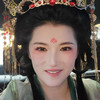Popular Trip Moments
6-Day Yantai-Qingdao-Tai'an Itinerary: A Detailed Guide You Can't Miss! | Mount Ma'an in Jinan! A great place to climb and exercise! | In Jinan! The only place where you can show off your wagyu beef without feeling guilty! | A date guide to impress your partner! — Jinan Edition. | This hidden gem offers a glimpse of autumn across the country, and it's free! | Jinan Secret Realm: Exploring the Old Grain Depot Museum: A Journey Through Time and Space. | Must-visit Jinan! 3-day 2-night value-for-money guide! | Winter Family Travel|Take advantage of the warm sunshine in early winter and let’s go! | Dingzizhai, Jinan: A hidden gem for outdoor activities, perfect for beginners. | Jinan Red Leaf Valley | For a leaf, go to a mountain. | "Jinan Autumn Secret Xiujing River Park: Spring and Autumn Viewing Guide." | No hotel understands romance better than Guihe Intercontinental. | Jinan | A city of autumn colors and lakes, where you can enjoy the simple pleasures of life. | I highly recommend this B&B in Impression Jinan Spring World. | A pure land with three sticks of incense. | It's worth the 3-hour round trip! I visited Moquan Spring three times. | Autumn is the best time to visit Jinan and Mount Taishan in Shandong. Don't miss out! | The Cantonese cuisine in Jinan is so delicious. | Live: Capture the fall of Qianfoshan in Jinan. | Must-Visit in Jinan | A Romantic Trip to Baotu Spring and Daming Lake. | You must stay at this hotel when you come to Jinan!!! | Jinan North has a lot of delicious food. | Reverse tourism! A two-day itinerary in Jinan that is full of fun and free of pitfalls. | A well-equipped hotel - Hyatt Regency Jinan. | A hotel with enthusiastic and attentive service—Jinan Hongteng International Hotel. | Friends' Jinan travel tips revealed. | Baotu Spring, the heart of the City of Springs, is a breathtaking sight. | Back to Jinan | Mingshui Ancient City. | Lianhua Shengjing Scenic Area | Unlock a new way to enjoy French romance with teppanyaki French cuisine!
Popular Travel Types
Recommended Attractions at Popular Destinations
Bangkok attraction near me | Manila attraction near me | Tokyo attraction near me | Taipei attraction near me | Hong Kong attraction near me | Seoul attraction near me | Kuala Lumpur attraction near me | Los Angeles attraction near me | Shanghai attraction near me | New York attraction near me | Shenzhen attraction near me | Osaka attraction near me | Singapore attraction near me | London attraction near me | Guangzhou attraction near me | San Francisco attraction near me | Beijing attraction near me | Macau attraction near me | Bali attraction near me | Jakarta attraction near me | Paris attraction near me | Ho Chi Minh City attraction near me | Istanbul attraction near me | Phuket attraction near me | Chicago attraction near me | Seattle attraction near me | Toronto attraction near me | Orlando attraction near me | Cebu attraction near me | Chiang Mai attraction near me
Popular Attractions
Namsan | Warner Bros. Movie World | Juzizhou | One World Observatory | Kathedrale St. Florin | Chunhuiyuan Resort | Guangzhou Chimelong Tourist Resort | MuTianYu Great Wall | Akihabara Electric Town | The Bund | The Grand Palace | Shanghai Gongqing Forest Park | Bosphorus | Three Natural Bridges | Ocean Park Hong Kong | Vagapattu Vilai - Pathrakali Amman Kovil | The White Dragon Pond of Miyun | Longqingxia Area | Qixia Mountain Scenic Area | Qixia Temple | Kalawewa National Park | Sala del Regno dei Testimoni di Geova - Salerno | Kopi petungkriyono kayupuring | Thema Optical S.R.L. | Shiva Temple | Dongia Talab | Camino Natural Lebaniego Castellano | Rocamadour | Makronissos Small Beach | Biblioteca - Sezione Scienze Economiche
Popular Restaurants in Jinan
CAFÉ L6 | 濟南香格里拉大酒店·咖啡泉自助餐廳 | 梅飛酒家(桑園路店) | 穆得·老周家牛肉燒餅(普利街店) | 環聯商貿城夜市 | JIN CHUN XI | Jin Chun Xi ( Ying Xiong Shan Road Flagship Store) | 堯舜酒家 | enlux Jinan Silver Plaza Hotel· Silver Top Revolving Restaurant | 山東國際飯店·三義和(解放橋店) | Xiao Que Xing | 無名糖油條 | 千西侯記煎餅(千佛山西路店) | The View Restaurant | Phoenix Tree Creative Chinese Cuisine | Yin Jia Authentic Japanese Barbecue | 茅廬川菜(恆隆廣場店) | 黃記煌三汁燜鍋(世茂國際廣場店) | 舜和海鮮(天發店) | LU STYLE (CBD) | 濟南吉華大廈(泉城廣場趵突泉店)·吉華大廈中餐廳 | Shi Tou Xian Sheng De Kao Lu ( Kuan Hou Li ) | Yin Jia Ben Ge Jap-Style Barbecue | Gaodijie56haogangshi Restaurant (lingxiucheng) | 悅蓉水莊(奧體店) | Xincaotang Hotpot | 黃三怪(銀荷大廈店) | 老闆戀上魚(雨滴廣場店) | Biscotti Italian Restaurant | 老金燒烤(山大路店)
Popular Ranked Lists
Popular Local Restaurants in Zhangjiajie | Popular Luxury Hotels Near Weymouth | Top 10 Local Restaurants in Nha Trang | Top 3 Premium Hotels in Bogor Regency | Popular Local Restaurants in Chongqing | Top 7 Night Attractions in Greater London | Popular Luxury Hotels Near Date | Top 3 Night Attractions in Phuket Province | Popular Night Attractions in Iran | Popular Local Restaurants in Shantou | Top 11 Night Attractions in Dalian | Popular Night Attractions in Sargent's Purchase | Top 18 Local Restaurants in Kyoto | Top 10 Local Restaurants in Boracay Island | Top 20 Local Restaurants in Jeju | Top 19 Local Restaurants in Kunming | Popular Premium Hotels in Pasadena | Top 8 Night Attractions in Shangrao | Top 15 Local Restaurants in Langkawi | Popular Local Restaurants in Yantai | Popular Local Restaurants in Beijing | Popular Premium Hotels in Hurworth | Top 9 Night Attractions in United Arab Emirates | Popular Night Attractions in Georgia | Popular Night Attractions in Kazakhstan | Popular Night Attractions in Russia | Popular Luxury Hotels Near Port Campbell | Popular Luxury Hotels in Santorini | Top 7 Night Attractions in Guiyang | Popular Night Attractions in Duyun
Payment Methods
Our Partners
Copyright © 2024 Trip.com Travel Singapore Pte. Ltd. All rights reserved
Site Operator: Trip.com Travel Singapore Pte. Ltd.
Site Operator: Trip.com Travel Singapore Pte. Ltd.





















